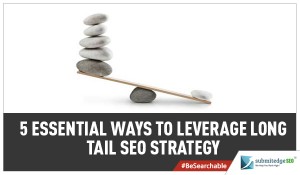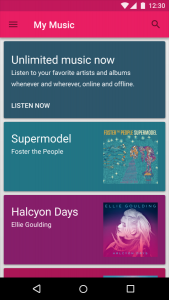Raise your hand the last time you enjoyed receiving a phone call from an unknown number. In fact, more likely than not, you simply reject them. And in the event that you do answer a cold call, you likely look for an excuse — any excuse — to get off the phone as quickly as possible.
At the end of the day, if you want to buy something, you do some research, ask some friends or colleagues for recommendations, and maybe let it simmer on the back burner until you actually have to make a decision.
This realization may make you feel uneasy. If you’re a business owner, sometimes it feels like cold calling is one of the best ways to generate leads. Unless you’re constantly attending networking events and posting flyers on public bulletin boards, how else are you going to get clients? Turns out, there are many other ways to do so that do not include outbound tactics like cold calling.
What Is Cold Calling?
Cold calling is what occurs when you initiate a phone call with individuals who have not previously expressed interest in your goods or services. Or maybe they have, but such an interest has been so minute, they probably don’t even remember it. So then you go into an awkward spiel, such as, “Yes, Mary. You asked me what I do for a living at the Marketing Annual Convention as we were milling about, eating hors d’oeuvres.”
In a nutshell, cold calls are disruptive, confusing, and can sometimes make a person feel like the caller is trying to scam them. So, is it ever right to do some cold calling? Yes, but it depends…
Cold Calling in Sales: When It’s Right and When It’s Not
Let’s dispel a common myth: Cold calling isn’t always a bad thing. Done right, it may work. However, you have to be strategic about it.
Benefits of Cold Calling
A big benefit of cold calling is that you have to repeat your sales pitch so many times, it’s an effective way of fine tuning it to the point of perfection. Forgot to tell someone about a feature? Someone else complained that it was too long? Good. You’ll get it next time. And you do.
You also often get feedback from the prospect — why they’re not interested, why they don’t think the timing is right, or budgeting concerns, to name a few. You can then use these insights when crafting and fine tuning your marketing strategies.
Finally, cold calling can sometimes become a source of future warm calling opportunities; at which point you may have an easier time making a sale.
Cold Calling vs. Warm Calling
Now that we covered the definition of a cold call, let’s discuss a much better source of prospects — warm calling.
This is the term used when you’re initiating a phone call with an individual who has already expressed an interest in what you have to offer. This can include people who’ve filled out forms on your website, previous customers, and even former cold calls who were too busy to entertain your call earlier, but did mention that you had piqued their curiosity.
In short, warm calling is another name for following up. While this is certainly a way to convert leads into customers and you should definitely follow up with everyone who seems like they may be a good client, you also want to have other lead generating marketing tips on your radar. You know, the whole “never putting all your eggs in one basket” advice.
10 Tips for Generating Leads Without Cold Calling
When crafting your marketing and sales plans, in addition to setting some time aside for cold and warm calling, consider doing the following action items to get more people into your sales funnel:
1. Start and Maintain Your Business Blog.
The wonderful thing about blogging is that it’s a great way to build up your website’s page count, share valuable information with your customer base, and even create opportunities to convert website visitors into leads.
Your blog can be about almost anything you want it to be, but ideally you will know exactly what your ideal buyers are searching for and identify what topics to build authority in so you rank for relevant queries in search engines.
For best results, it’s important to keep a regular blogging schedule, write content that is meaningful and useful to your industry’s customers, and to use links and call to actions (CTAs) to give readers a chance to convert into leads.
Adding blog posts can help build your SEO — especially if your content is good enough to get other people to link to your site and share posts over social media (so be sure to add some social sharing buttons).
If you’re just now starting a blog, you’re likely falling behind competitors fast. After all, 77 percent of companies have a documented content strategy and 70 percent of marketers are actively investing in content marketing.
This is why you should build out a comprehensive content marketing strategy that is targeting the right keywords and includes an aggressive publication schedule. Start with at least three to five posts per week and monitor performance.
As your traffic begins to increase, you can start to blog more frequently. If it’s difficult to find time to keep up with your blogging schedule, consider outsourcing your efforts to agencies that offer content creation services and demonstrate success in increasing traffic and lead generation.
2. Create Compelling Landing Pages.
Sometimes, you’ll have a piece of content that is too large and detailed to put in a single blog post. Whether it’s an ebook, whitepaper, special calculator, or something else, these pieces of premium content can — and should — be used to entice website visitors to hand over their contact information.
However, to get that info and turn the visitor into a lead, your content needs a great landing page to pump up readers and let them know what they’re going to get in exchange for giving you their name, email address, company name, or any other details that might be on a form.
Premium content offers are an awesome tool for getting people to give you their info while also providing them valuable information they need to know about your products or services.
3. Use the Right Social Media Channels.
There are a lot of social media sites. Your company can choose which ones to join depending on what your buyer persona is most likely to use; then leverage it for lead generation. Being active on a social media site can help your company grab the attention of a prospect right where they’re active online.
When using social media to boost your lead gen efforts, consider:
- Sharing links to your gated content offers.
- Advertising to targeted audiences.
- Using influencers to spread brand awareness about your company’s products or services.
While there are many ways to get your business in front of potential prospects, you have to understand exactly how to utilize social media the right way. The success of social media-based marketing is largely dependent on a few factors, including:
- Frequency of posting.
- Responsiveness to posts about your company online.
- Quality of social media posts.
- How well you align your social media channel to your customer base and industry.
For example, many B2B-oriented companies primarily focus on social media sites such as LinkedIn, because that’s where their audience is. B2C companies often focus on Facebook or Instagram, since they have some of the largest audiences of all the social media networks.
Posting regularly to social media sites helps build engagement with consumers online and is key for attracting followers and getting them to your website so you can convert them into leads.
4. Incentivize Referrals, Reviews, and Testimonials.
Encourage your current customers to be brand ambassadors for your company.
A study run by Trust Radius revealed that people see customer reviews as more personal, more authentic, and unbiased. The same study also showed that client testimonials can impact multiple stages of the buying process.
Not quite convinced? People are much more inclined to make a purchasing decision after a friend refers them to a business. By writing reviews and testimonials and sharing about your business to their colleagues, your customers are building your brand awareness and positioning you as a valuable asset to any company.
Unfortunately, only about 29 percent of satisfied customers take the time to refer their friends, colleagues, and family to a business they enjoyed engaging with.
To increase your numbers, consider creating an incentive program that motivates customers to promote your business. You can offer discounts, free access to premium content, or anything you feel is worthy of receiving a strong referral.
5. Find or Create Presenting Opportunities.
The more you put your brand out there, the more opportunities you have to generate leads. One way to bring attention to your brand name is by looking for speaking opportunities. If you can’t find any, create your own through free webinars, Facebook Live videos, or educational courses.
Look for a topic you know well that you can present confidently — and keep your focus on resolving specific pain points your prospects may be facing. If you’re able to help them with your presentation, they’ll keep you top of mind when they are ready to purchase.
When you can deliver valuable information that can teach and educate consumers, you’ll better position yourself as an industry leader. Plus, it’s a great way to actually go out into the real world and generate more leads by building face-to-face connections.
6. Check Your Website’s SEO — and Update Content Regularly.
Every day, millions of people from all walks of life use online search engines to find products and services. Based on the search terms used, these programs rank the list of results from most relevant to least relevant (with ads placed at the very top).
These rankings are based on numerous criteria, which often change as search engine providers tweak their algorithms. Because these evaluation criteria change periodically, it’s important to regularly evaluate your website’s search engine optimization (SEO) and make updates accordingly.
For example, is your website mobile-device ready? If not, you’ll take a big hit from Google, as the search engine now prefers mobile friendly sites in search results.
Strong SEO is a basic part of guiding visitors to your site so you can convert them.
7. Optimize Your Website’s Navigation.
Once visitors arrive at your website, what’s next? How will they know where to go to download your content offers, see your products, or talk to customer support?
A website’s design and user-friendliness goes a long way toward helping you convert visitors into leads. If your site is easy to navigate — and if you put landing pages and contact forms in the right spots — you may notice that you have a much higher visitor-to-lead or even lead-to-customer conversion rate.
To make meaningful improvements, it’s necessary to have actual-use data for each page on the site. Heat mapping softwares such as Hotjar can help with this by tracking where customers are clicking and letting you see where they’re hesitating or dropping off.
Another way to gather information about your website’s usability is through navigation tests or usability studies. The report you get at the end of the testing can tell you a lot about how well your website helps users.
Collecting data about how the website is used is a key part of growth-driven design best practices.
8. Write Content for Industry Publications.
Getting published in industry publications establishes you as an authority in your field. It also elevates your profile, making your business more widely known.
Many websites and magazines have a link where you can pitch your article. Usually, it has to be original content that readers will find useful. For example, if you’re a divorce attorney and there’s a recent update on custody laws, pitching an article explaining what this means for divorcing couples in easy-to-understand terms will likely generate a lot of interest.
Another way to get your name in the press is to sign up for notifications from platforms like HARO (an acronym for Help a Reporter Out), where journalists working on stories seek out expert sources to quote in their articles.
You can also enter “writing submissions + [your industry]” into search engines to look for publications that are seeking content from people in your field, or become a guest blogger for a variety of websites.
9. Start a Newsletter.
Out of sight, out of mind. And unless you have a recurring services contract with a client, you may not even be on a prospect’s radar.
If your buyer persona is the type of person who reads newsletters, you need to create useful, relevant, interesting content and deliver it to their inbox regularly — just make sure you don’t do it often enough to become annoying, or you may end up in their spam folder.
Make sure to spend some time drafting a catchy subject line. This will increase the chances of a better open rate, which is what will ultimately lead readers to your website.
Then, make sure to keep your focus on how to benefit the reader. This is not about you. If you sound too salesy, future communications may end up getting deleted without ever being opened.
Include useful content, such as industry news, how-to guides, discount codes, webinars, case studies, and then some fun stuff, like upcoming events and company news. As long as they receive some benefit, they’ll continue reading future communications.
10. Re-Engage Former Customers.
Your former clients already know you’re good at what you do. And if you’ve done a good job at nurturing them, they’re likely to become repeat customers.
In addition, it’s more cost effective to retain existing clients than to get new ones. Reach out to people you’ve served before to determine whether they need your goods/services again, or to identify upselling opportunities. At the end of the day, they are already familiar with what you do,
There are many ways to do this. You can engage with them on social media, create a customer loyalty program (and communicate with them to let them know!), request feedback, send them a thank you email, and include all of your new services and what your company has been up to in your email newsletter.
These are just a few ways to get leads without ever having to place a cold call. To turn leads into customers, you’ll need to use more inbound marketing practices, such as lead nurturing emails, to stay at the forefront of the contact’s mind and guide them down the sales funnel.
Business & Finance Articles on Business 2 Community(66)
Report Post






